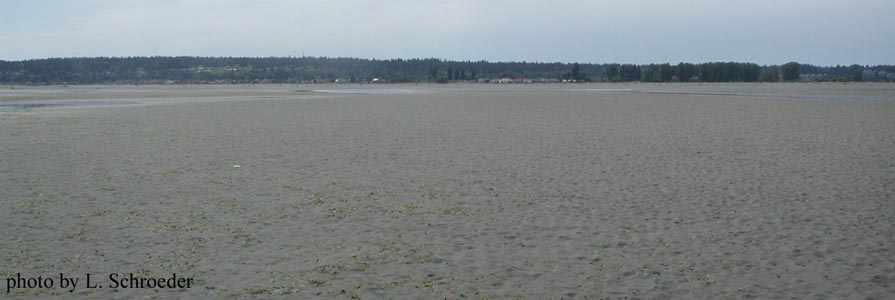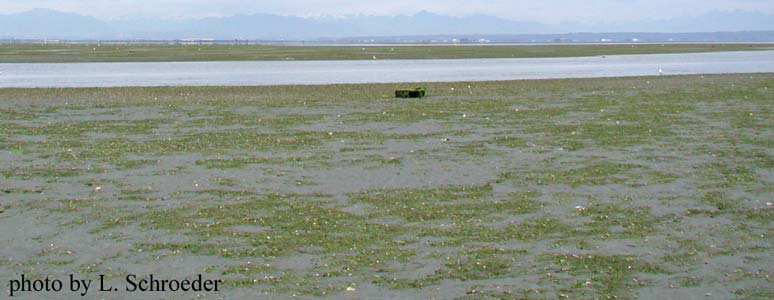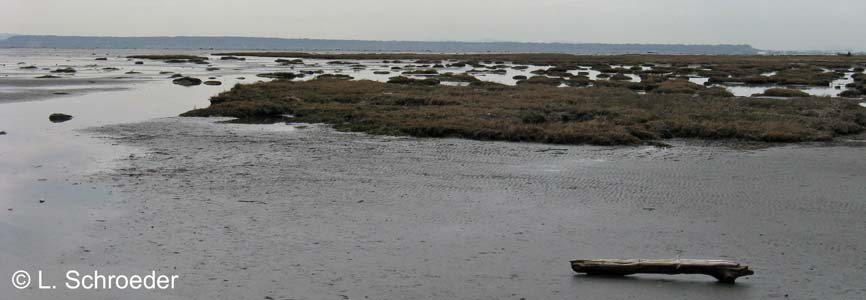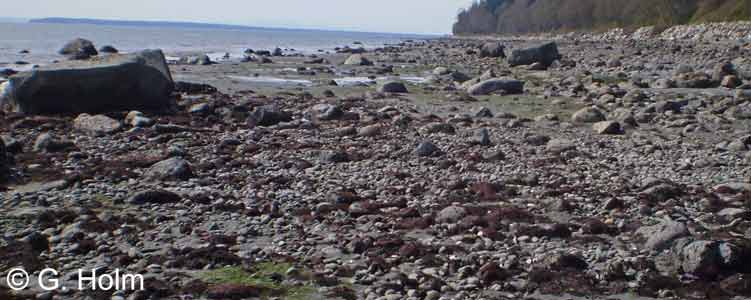Boundary Bay, British Columbia
Site Description:
Boundary Bay is at the far southwest corner of mainland British Columbia, just off the Strait of Georgia.Some representative sites around the bay are as follows:
The west side is represented by Centennial Beach, a very extensive tide flat of sand stretching over a mile from the beach to the water's edge on a good low tide. A tidal channel travels down the beach and out to the Bay, but even the channel is nearly out of view from the shoreline. There are a few tide pools and eel grass beds near the channel. A few stranded crab traps tend to dot the tide flat and provide the only home for the few gastropod species you'll find here. Batillaria are the only common gastropod and they are extremely abundant.
The north side of the bay is also an extensive tide flat of sand although more muddy in spots. The area is appropriately called Mud Bay. Crab traps are less commonly stranded in this area. The near beach area has some marshy habitat of raised mounds of marsh grass and old tree stumps.
The east side is represented by Crescent Beach which also has a good sandy tide flat, but with more tide pools and eelgrass. The upper beach becomes cobble. The southern part of the beach becomes more rocky with a sharper drop-off to deeper water.
Google Map
Centennial Beach - west side


Out
on the tide flat looking west back toward the shore
Near channel midway out,
looking east across the
bay
Mud Bay - north side

Crescent Beach - east side


sandy section rocky section to the south
Species List:
Following is a list of mollusk species observed at this location by members and associates of the club. This is by no means a complete list of the species which may occur at this site. Revisions and additions to the data are made as we acquire new information. When a site contains more than one very distinctive type of habitat or if multiple sites were included in a single location, then a species list for each is included.
We indicate frequency of occurrence based on our observations. This is an indicator of how likely it is that you may be able to find this species yourself and is not a formal population survey.
Frequency Code: (Based on the assumption that you are looking in the appropriate location where the species
likes to live - on rocks, in sand, etc. Some populations fluctuate seasonally. Ours are based
on the spring/summer seasons.)
[4] - Rare - very difficult to find, maybe only a couple found after repeated visits to the site
[3] - Uncommon - difficult to find, may not see on every trip but dedicated searching may turn up a few
[2] - Common - easy to find, should locate a number of them on any given day
[1] - Abundant - very easy to find, large numbers should be seen on every trip
Data is all intertidal unless noted.